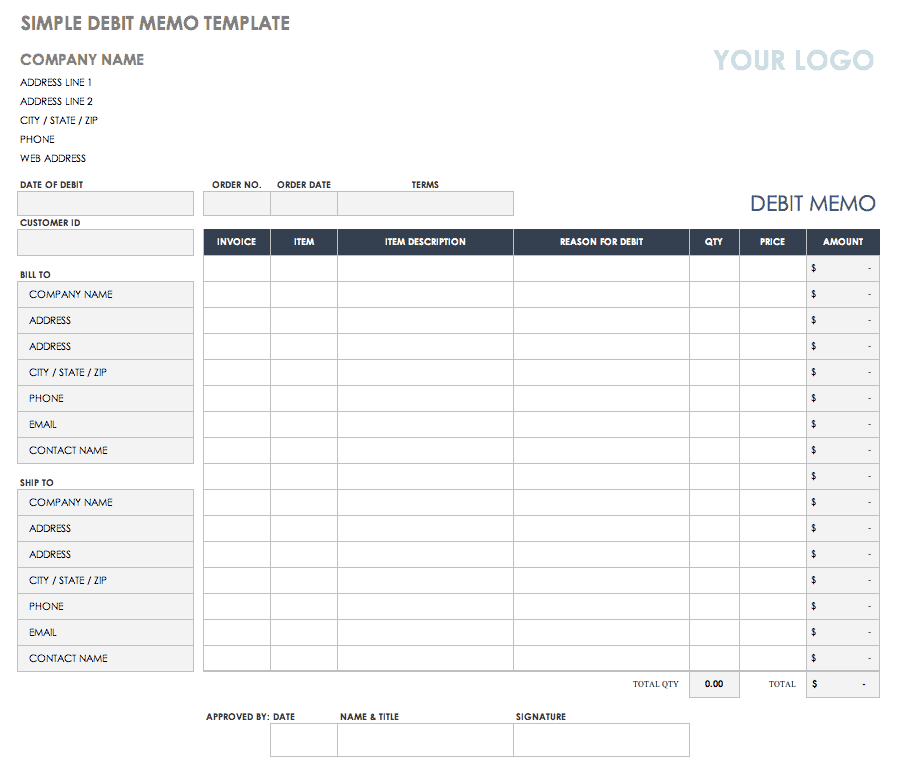Debit note and credit note are official accounting documents, particularly for business owners. Separate from an invoice, these notes inform customers of their available company credit or, conversely, how much they owe. They’re also crucial for monitoring shipments, determining when payments are due, and determining if any credit remains on the account. While there are several sorts of notes, one of the most critical forms of notes that businesses should be familiar with is debit notes.
As you may be aware, the primary purpose of business notes is to keep track of purchases and sales. Debit notes also function as receipts for transactions in the case of a sale mistake. Among them are variations in the number of items or the buyer’s return of goods. This note is important for the company’s purchasing and selling transactions, so it must be collected and stored. Organize your company’s documents using document management software. As a result, read this article to the conclusion for a more thorough explanation.

Also read: Get to Know the Importance of a Cash Note
Table of Content
What is a Debit Note?
A debit note, sometimes referred to as a debit memo, is a document sent by a seller to a buyer informing them of their current financial responsibilities. In simple terms, this debit note will assist you in reducing the buyer’s outstanding trade obligations. These notes are often used in business-to-business transactions, such as when one firm gives another goods or services before submitting an official invoice.
The debit note might act as a reminder for money that is now due or offer information about an open invoice. The message will contain:
- The total expected credit.
- An inventory of the returned products.
- The reason for their return for returned items.
Debit notes differ from invoices in that they are usually written in letters and do not need immediate payment. This is true when a debit note is used to notify a buyer of impending financial responsibilities based on sums that have not been appropriately invoiced.
The Functions of a Debit Note
As previously stated, a purchaser often provides this debit note when they make a transaction from a seller. This debit note performs critical roles in the finance industry, including the following:
1. Reducing the seller’s debt
you can use debit note to request relief or a reduction in the amount owed to the seller for items that have already been dispatched. The amount billed with this letter will be less than the initially agreed upon. This decrease generally happens when the goods acquired are in the form of receivables, and the seller must return them.
In a sale and buy transaction, changes in payables and receivables are typical and frequent. As a result, businesses must keep track of all proof of payables and receivables to prevent mistakes after the collection period.
2. Product price reduction
The debit note’s second use is to seek a price adjustment on a specific product. This price adjustment may occur if a product is no longer sold or both parties agree on other issues. As a result, you must adjust the price of your product to increase transparency. In this manner, both the vendor and the customer benefit. This is because the product becomes more marketable, allowing purchasers to get a more reasonable price.
3. Correction of the number of products

As previously described, this form of note use to seek modifications to the number of products agreed upon between the buyer and seller. For instance, the customer got an insufficient amount of items. As a result, this message is utilized to show on billing to prevent similar issues from occurring.
If the goods become damaged or do not match the order, the buyer can request a refund by submitting proof in the form of a debit note. All transactions will become more transparent due to valid evidence of the number of goods that the buyer must receive.
Also read: 7 Best Inventory Control Tips to Improve Efficiency
Examples of Debit Notes and How to Make it
The process of creating a debit note is relatively simple. If you make it manually, all you have to do is fill in the blanks on the note, such as the seller’s address, the date it was created, a description of the item the seller wants to return or discount, and the crucial components, which detailed later in this article. You may include a signature as extra documentation if required to ensure that the note is genuine for all parties involved in the transaction.
On the other hand, Microsoft Excel may make it more clean and organized. Furthermore, taking notes using Microsoft Excel is convenient. If you want to make it more organized and tidy, you may use Microsoft Excel (learning to format in Excel is simple) or an automated financial management system. Here’s an example of a debit note for those of you who don’t know what one looks like:
Debit Note Example 1

Example 2
Example 3
Components of a Debit Note
A debit does not have a fixed format for its creation. The creation of this note is generally in line with the corporation that issued its agreement. Nonetheless, there are a few key elements that you must include in your debit notice. The components in consideration are:
- Name of the buyer
- Name of seller
- number Credit note number
- Description of the number of goods debited
- Type of goods debited
- Price of goods per unit
- The total cost of goods debited
- Date of creation of debit note
- Name and signature of the buyer
Conclusion
We may conclude from this that the debit note is proof of a significant and genuine financial transaction or accounting for both the seller and the buyer. It is pretty tricky to get pricing information and proper evidence of payment without this record. Furthermore, notes serve a variety of additional tasks that are critical in a sales transaction.

HashMicro’s Most Comprehensive Accounting System is one of the technologies you may use to make debit notes automatically. This system comes with a wide variety of capabilities that willl utilize to help your firm make better business choices. Of course, since every evidence of entering transactions already connected with the financial reporting system, the accounting procedure will become simpler. Click here to try the free demo that we have!

































